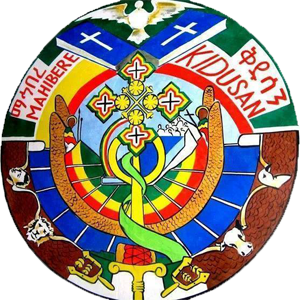About Mahibere Kidusan
Name
The association was named Mahibre Kidusan (an association in the name of Saints) Saints would be commemorated in that they abounded the secular world and sacrificed their lives to the orthodox belief for whom the prophets prophesized and apostles evangelized.
History
In 1977 E.C (Ethiopian Calendar) few students of higher education initiated the youth in the compass to become members of Sunday school and know the teachings of the churches. Later, this effort had been strengthened by students trained in the Zeaway Hamere Berehan St.Gebreil Clergy Training Monastery by the Then Arch Bishop of Shewa Abune Gorgorious II.
The movements continued in Bilatie military camp that brought all students of higher institutions in the country in 1983 E.C after a year, with the blessing of the church fathers the associations was set up by the name “Mahibre Kidusan” under the Sunday School Department of the Ethiopian Orthodox Tewahedo Church. Since then the associations has been proving spiritual service.
Vision
“Envisioning the Church fulfill its universal leadership role.”
Mission
Fructify and procure an organized, whole, eloquent, moderate, versatile and leader generation who strives in achieving the church’s mission and diligently work for her existence.
Institutional Asset
OBJECTIVES
Stand
The association shall not interfere in administrative affairs of the church and it is free from and political affiliation.
Membership
- Disciples who trained in various training institution of the church and providing ministerial activity.
- Higher institution students attending Sunday in their respective parishes.
- Member of Sunday school or/and parish that provide spiritual service after graduating from higher institution.
- The laity who support the objective of the association with their knowledge, money and labor.
Structure
Mahiber Kidusan is set under the Sunday School department of the Ethiopian Orthodox Church. It provides spiritual services by its sub centers in the dioceses all over the country and in the Diaspora.


Abune Tekle Haymanot
Our patron Father Abune Tekle Haymanot is the most prominent saint in Ethiopia. He is one of the very few, if not the only human on earth given wings! It is good to note here that saint Tekle Haymanot is one of the very few saints that Christians celebrate their birthday. He is probably the only Ethiopian saint celebrated officially in foreign churches such as Egypt and Rome. He has a monthly feast on the 24th day of every month in the Ethiopian calendar (which is the same as the Coptic calendar and derived from it). He performs many miracles daily in the lives of his children and we commemorate it in holy church. (Coptic Synaxarium)
The Intercession of Holy Mother Saint Mary
The blessed from all saints, whom is above all creature including the Angels, pure and virgin Holy Mother of God Saint Mary, is the hope of human race. She was in the will of God before the creation of this world. After the fall of Adam and Eve when eating the forbidden fruit, death came upon mankind and was punished earthly. But for His mercy is tremendous, He vowed to save Him through his root. It is this word of God done through the virgin Mary through the miraculous work of birth of the Holy Son to save us by crucifixion. Her purity and holiness has bestowed us salvation for she become the mother of God and His work of redemption.
The Assumption of Saint Mary
The assumption of the body of our pure Lady Saint Mary, the Mother of God is celebrated on the sixteenth day of this month. While she was keeping vigil, praying in the Holy Sepulchre, and waiting for the happy minute of her liberation from the bonds of the flesh, the Holy Spirit informed her of her forthcoming departure from this vain world.
The Feast of Transfiguration
Our Holy Orthodox Church celebrates the commemoration of the transfiguration of our Lord and Savior Jesus Christ on Mount Tabor on Nehassie 13. The disciples, Saint Peter, Saint James and Saint John, were with Him, and about whom the Lord said, “ …. there are some standing here who shall not taste death till they see the Son of Man coming in His Kingdom.” (Matthew 16:28) He fulfilled His promise, for six days later, He took His three disciples, up on a high mountain, where He was transfigured before them. His face shone like the sun, and His clothes became as white as light. And behold, Moses and Elijah appeared to them talking to the Lord.
“Children are a gift from the Lord” (Psalm 127:3)
A gift bestowed from dearly beloved ones are most cherished. Foremost precious presents granted are by God for His unconditional love. What could ever be more valuable than His gift in life. He gave us His life, love, peace, hope and Kingdom. This inheritance we strive was done through the holy root of mankind Adam for he was told “I will be born from grandson and save you.” (Book of Clement)